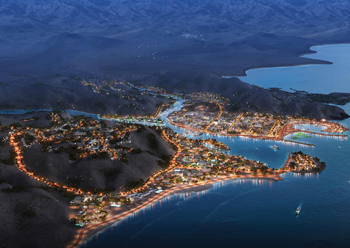
Spearheaded by the governments of India and the UK, the first transnational network of solar power grids known as the Green Grids Initiative – One Sun One World One Grid has been launched.
At the COP26 climate conference in Glasgow, the International Solar Alliance (ISA), India Presidency of the ISA, and the UK COP Presidency unveiled plans to connect 140 countries to round-the-clock green and renewable power.
The announcement was accompanied by the One Sun declaration endorsed by 80 ISA member countries, which stated: “Realising the vision of One Sun One World One Grid through interconnected green grids can be transformational, enabling all of us to meet the targets of the Paris Agreement to prevent dangerous climate change, to accelerate the clean energy transition, and to achieve the Sustainable Development Goals. These efforts can stimulate green investments and create millions of good jobs.”
The project will be implemented by ISA, in partnership with the World Bank Group, and aims to harness solar energy, ensuring that generated electricity flows to areas that need it most.
As the chief agency leading and delivering the project, ISA aims to help mobilise $1 trillion of funding by 2030 to assist developing countries in expanding their solar power grids to meet their energy access, energy security and energy transition needs.
The initiative is widely seen as a big and bold move ahead on the ISA’s solar transition roadmap and will go some way towards realising its vision for a solar energy future.
Following the announcement, ISA Director General, Dr Ajay Mathur, remarked: “This network has the potential to be a modern engineering marvel, and a catalyst for effectively mitigating climate change in the next decade.
Under the plans being released, ISA intends to push for a network of interconnected green grids in the coming years. As part of its first phase, the project will drive interconnectivity across the Middle East, South Asia and Southeast Asia. The second will focus on African power pools, while the third will drive global green grids interconnections.








.jpg)




.jpg)




























.jpg)




































